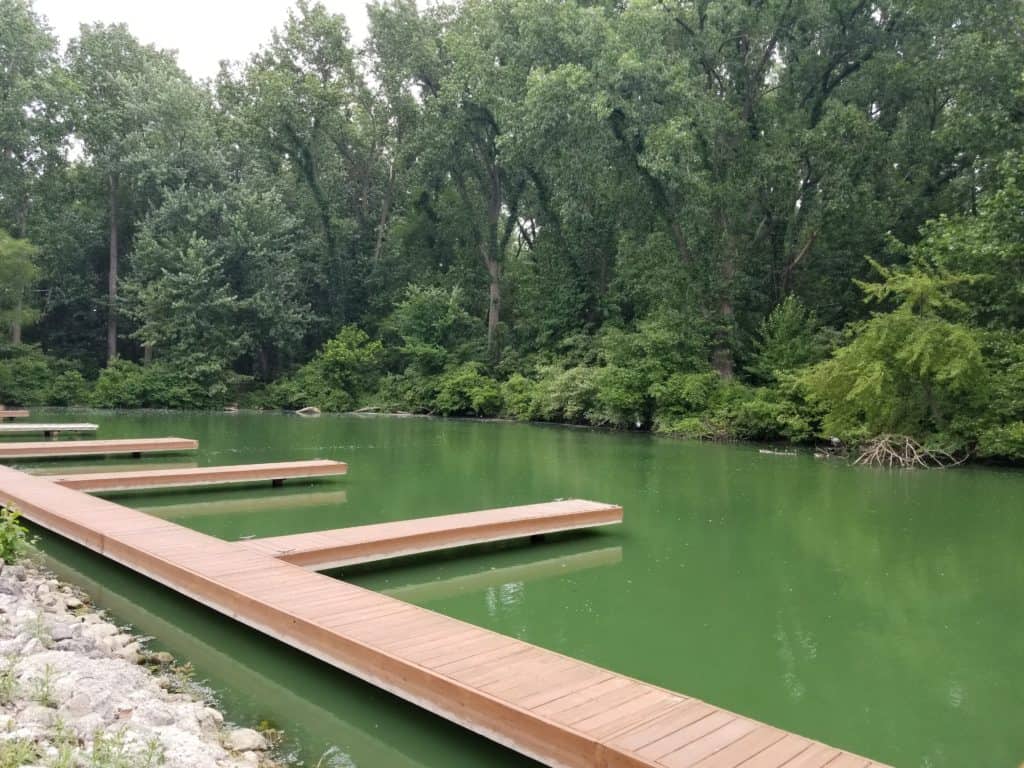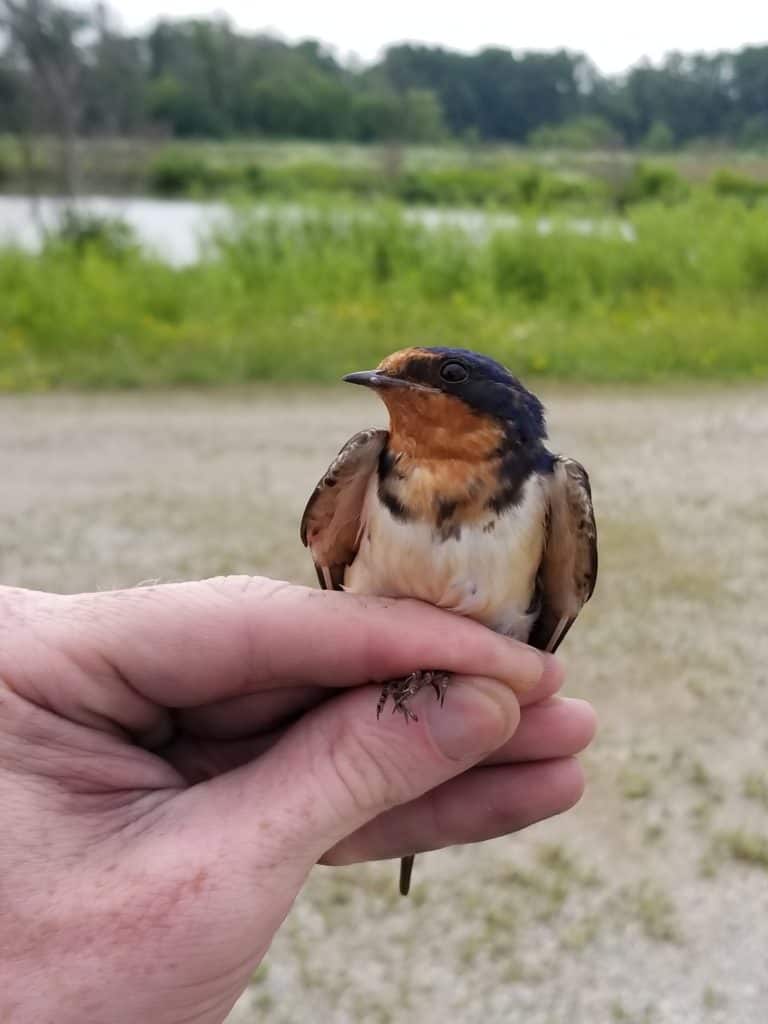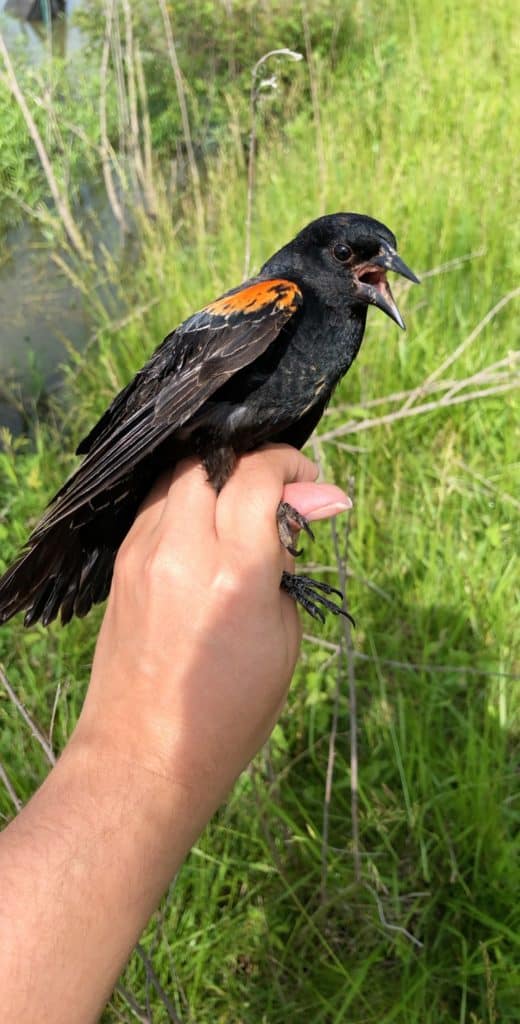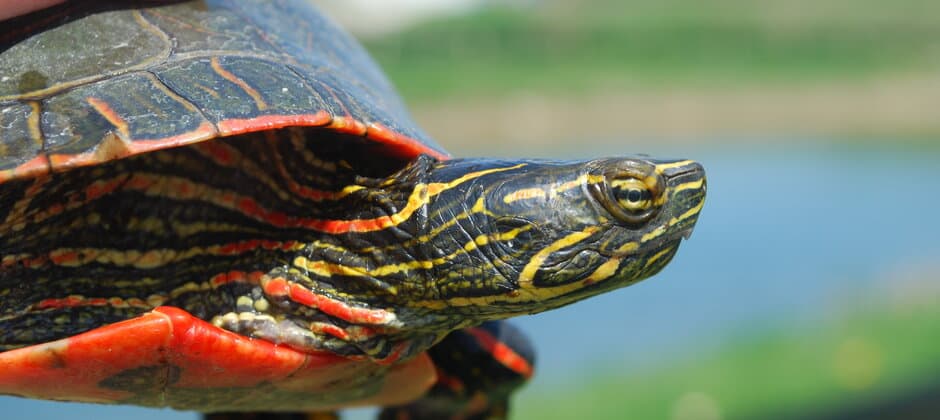Share this article
Toxic algal bloom cause mixed reactions in birds, reptiles
Toxic algal blooms could stress out wildlife, and in some cases, cause weaker immune systems in reptiles and birds in the Great Lakes region.
Blue-green algae blooms are caused by a mixture of warmer temperatures due to climate change and an excess of nitrogen and phosphorous runoff trickling into lakes and ponds from agriculture. Lake Erie in particular has a problem with toxic algae blooms, which can lead to health problems in wildlife and humans.
The region around University of Toledo is one of concern. “It’s a big problem for this area, and it’s predicted to get worse because of climate warming,” said Jeanine Refsnider, an associate professor in environmental sciences at the college.

A pond with toxic algae blooms. Credit: Jeanine Refsnider
She and her co-authors wondered if common wildlife species in the area also might be impacted by these toxic algae blooms. In a study published in Science of the Total Environment, they collected blood samples from two bird species and two reptile species that live around wetlands: barn swallows (Hirundo rustica), red-winged blackbirds, (Agelaius phoeniceus), northern watersnakes (Nerodia sipedon) and painted turtles (Chrysemys picta). They collected 15 to 20 blood samples of each of these common species in total, split between two different sites—one in Lake Erie before the algae blooms start and one in a smaller, shallower lake experiencing blooms already in the spring due to its relatively warmer water.
They analyzed the samples and found that the different species showed contrasting effects from the blooms in terms of physiological stress levels and immune system response.

The control site without algae. Credit: Jeanine Refsnider
Both bird species and the watersnakes showed higher levels of stress in the pond with higher algae exposure, while the painted turtles didn’t seem to exhibit different stress levels between the two sites.
The turtles’ lack of response wasn’t necessarily surprising as different turtle species often respond to stress differently in a variety of situations, Refsnider said.
The researchers also expected these higher stress levels would lead to weaker immune systems in the animals, since these two issues are often correlated in humans and other species.
But they found just the opposite for some of the species. The immune systems of the bird species showed no appreciable difference in function, while the watersnakes in the algae bloom sites actually had stronger immune systems.

Barn swallows had higher levels of stress in algae bloom water. Credit: Jeanine Refsnider
Refsnider isn’t sure why the birds showed no effects, but speculates that the snakes might invest more energy into functioning immune systems in the algae-filled waters to compensate for the lower quality environment.
“If this was the case, the increased energy the algal-bloom snakes put into their immune system would have come at a cost somewhere else—perhaps their overall body condition was poorer, or their reproductive output was less,” Refsnider said. “We didn’t measure those things here, but that would be a really interesting next step to determine whether the better immune functioning in the algal bloom snakes was costly to some other aspect of their physiology.”
While the turtles’ stress levels didn’t seem affected by the algae, exposed turtles did have weaker immune systems.
“We have different responses in the three groups of animals,” Refsnider said.

A red-winged blackbird. Credit: Ashley Nunez
She believes the turtles may be experiencing other impacts due to toxic algae exposure. In fact, many wetlands with high quantities of algae around the world have caused die-offs of fish and other aquatic organisms.
Refsnider has also conducted lab experiments on tadpoles exposed to levels of algae lower than that of the pond they sampled from in the recent study but still toxic to humans, according to the U.S. Environmental Protection Agency. “In seven days [exposed] tadpoles already showed signs of organ damage,” Refsnider said.
However, testing whether organs of these species were affected would have involved euthanizing the animals—something the researchers did not do in this study.
Header Image: Painted turtles didn’t show much change in stress in water exposed to toxic algae, but did have decreased immune system functioning. Credit: Jeanine Refsnider








